Bloodhound land speed record attempt goes into administration
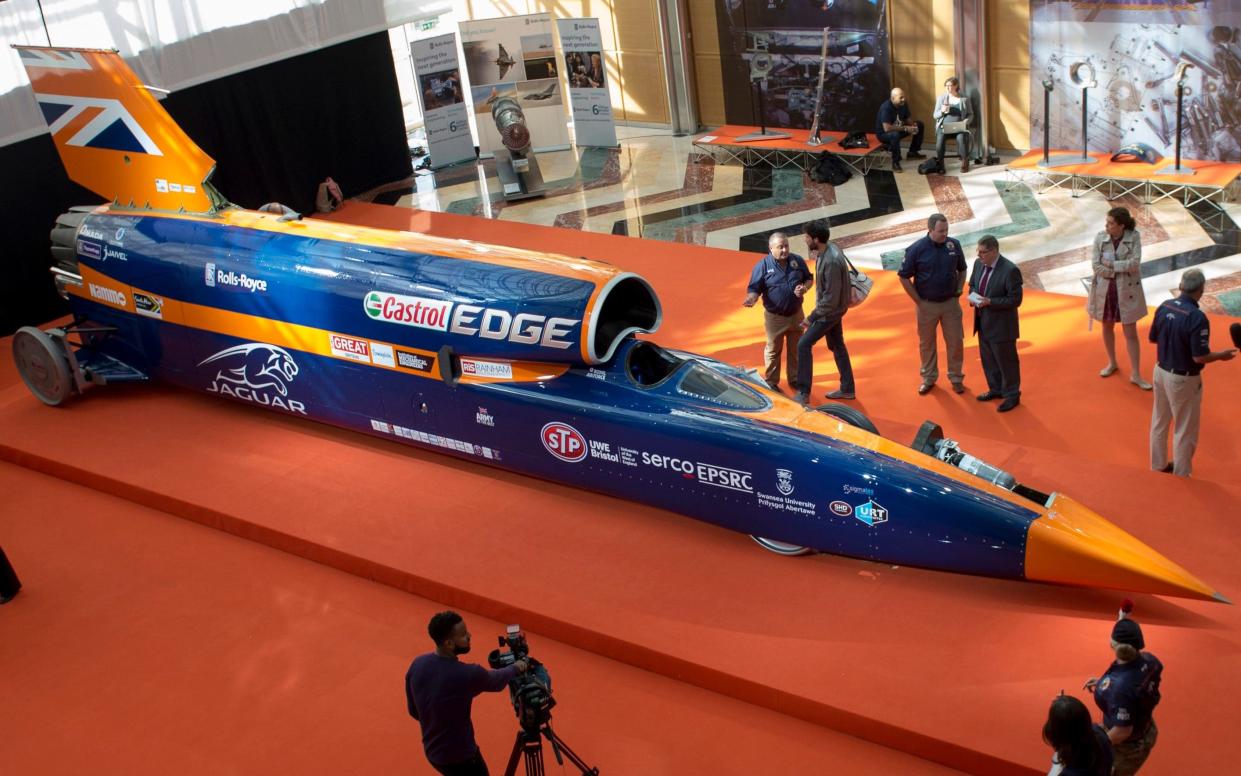
Bloodhound is bust. The British land speed record (LSR) attempt has run out of financial road and has gone into administration. It requires another £25 million to guarantee funding for the subsequent record attempts up to and including eventually going for 1,000mph on an 11.8-mile track at Hakskeen Pan in South Africa's Northern Cape.
The administrator is FRP Advisory LLP and Andrew Sheridan, its joint administrator, acknowledges the ground-breaking nature of the Bloodhound project and says that “administration provides some breathing space to identify an investor who will bring the guaranteed funding, impetus and expertise required to drive the project.
“Whilst not an insignificant amount,” he says, “the £25m Bloodhound requires to break the land speed record is a fraction of the cost of, for example, finishing last in a Formula 1 season or running an Americas Cup [yachting] team.”
It was always going to be a tall order, not just technically, but financially. As well as overseeing the project to build the 14-metre, 135,000 thrust horsepower jet- and rocket-powered car, Richard Noble, team founder and former LSR record holder, and his co-founder and Bloodhound driver, Wing Commander Andy Green, have been pretty much full-time fundraisers since 2007 when the project was launched.
Yet through endless public appearances, speeches to industry leaders and schoolchildren, grip-and-grin fork and platers at conferences and endlessly being asked the same damn-fool questions from journalists in interviews, neither once flagged or was anything less than friendly and supremely enthusiastic.
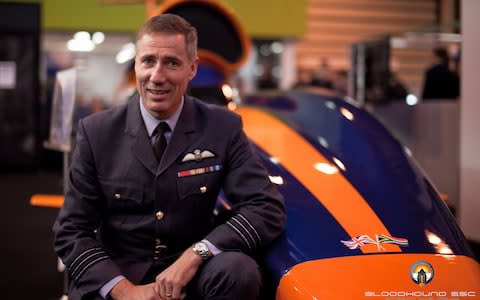
Many were called on in that time but few stepped up, though the sponsorship and partnership with Rolls-Royce, Castrol, Rolex, Cisco, Oracle and Geely, as well as the Ministry of Defence, which loaned expert staff and provided the EJ200 military jet engines, and the Northern Cape Provincial Government, which administers the record-breaking site, has been invaluable.
The public, too, has been inspired by the project, donating millions to have their name on the tail fin or to watch the first runs of the car at Newquay aerodrome last autumn.
And before you scoff about what a pointless thing this is, you might want to consider it was a Government minister who suggested the idea.
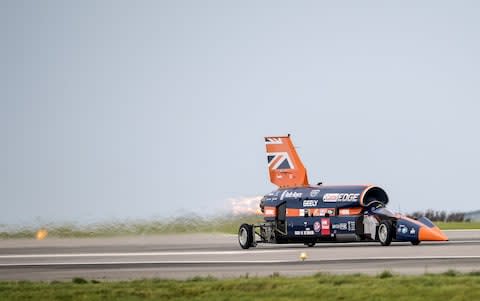
“It was Lord Drayson who suggested 1,000mph,” said Noble in 2009. He was referring to Paul Drayson, then British minister of science, businessman and amateur racing driver. “When we heard that [US record-breaker] Steve Fossett had bought Craig Breedlove’s car, Andy [Green] and I were thinking we would have to defend our record with about 800mph, but he said why not go for 1,000?”
Drayson wasn’t being entirely magnanimous. There are benefits to the UK government from advanced technical projects such as the Bloodhound. With major skill shortages hindering UK manufacturing companies, Drayson was looking to inspire a new generation of engineers and scientists with the “Apollo Effect”. This is the correlation between the numbers of PhDs awarded to US students during the years of the US manned space programme between 1961-72. During this time PhDs rose from 12,000 to 30,000 a year, falling off in 1972 with the last Apollo 19 moon shot.
To that end education was always key to the Bloodhound project and in its role as a contributor to the Science, Technology, Engineering and Mathematics (Stem) campaign, it has reached more than two million children since launch, including 120,000 UK schoolchildren a year.
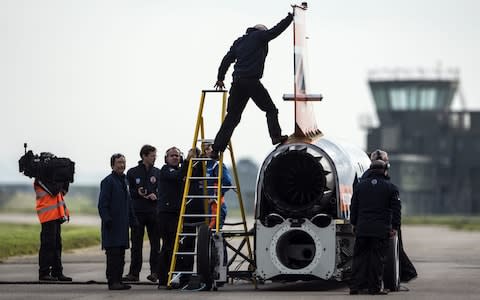
There really was nothing quite like it. You could go online and see the computational fluid dynamics that helped form the shape of the car and the engine intakes, as well as the test run data from the jet engine. Equivalent advanced engineering projects in motor racing or the defence industries don't share data like this.
And when, last October, I witnessed Andy Green reach 210mph in Bloodhound at Newquay aerodrome, I was but a tiny part of the crowd that had paid and patiently waited in the drizzle to see that run, and a minuscule part of the online community of enthusiastic folk inspired by what the team were trying to do. As I used to say to my editor at The Telegraph: “If you don't know about Bloodhound, there's a fair bet your children will.”
One of my favourite bits of data about the car is its sheer speed. “Faster than a speeding bullet,” is how screenwriter Jay Morton described Superman and over 80 years on, Andy Green would surpass Clark Kent's alter ego. Because if you fired what was once the most powerful handgun in the world, Dirty Harry’s .44 Magnum, at the tail of the Bloodhound just as Green toggled the hybrid rocket motor, Dirty Harry’s big 920mph bullet would never hit the car. Just think, even the low-level air-speed record, which is no longer contested, stands at “only” 994mph.

And while the project has only ever had half a dozen permanent staff, it will have touched the lives of so many millions as the car was designed, built, taken apart, redesigned and rebuilt.
As Lord Drayson said at the project's launch in 2008 at The Science Museum: “The burning question, of course, is why – and I suppose my instant response is: why not?
“For 65 of the 109 years [now 119 years] that people have contested the land speed record, it has been in British hands. It's been associated with legends like the father-and-son combination of Malcolm and Donald Campbell. Like the fearless Henry Segrave. Like Richard Noble, who regained the record for Britain in 1983 when he drove Thrust2 at 633mph.
“Make no mistake – this is the ultimate in racing. Unlike Formula 1, there are no restrictions on design, besides the stipulation for four or more wheels – two of which are required for steering. The rest is down to the imagination and creativity of the team, as well as the skill and bravery of the driver.
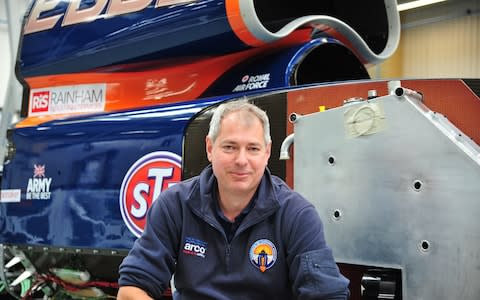
“The prestige that goes to the country holding the record should not be under-estimated. It demonstrates a can-do attitude, the capacity to innovate, the talent of our research base and manufacturing sector.”
And it's still all possible, of course. Mark Chapman, Bloodhound's chief engineer, has experienced the project's vicissitudes of fortune but kept plugging on, keeping the team together, motivated and moving in the same direction.
He says: “This project is built around the most successful team in the history of land speed racing, and with the right support we have no doubt that the project will achieve its aims and could be racing for the record in as little as 10 months.”
So if you have got a spare £25 million and fancy life in the very fast lane, FRP would be more than happy to hear from you. Its Bristol office is on 0117 203 3700.
For tips and advice, visit our Advice section, or search car reviews in our A-Z Car Finder


 Yahoo News
Yahoo News 
